This is part one in a two-part series. Read part two here.
The image at the top of this story is forever seared into the memories of many San Diegans. It's one of two pictures taken by professional photographer Hans Wendt, who happened to have his camera around his neck as he was pumping gas a few blocks away.
Thousands of feet up, PSA Flight 182, flying in from Sacramento by way of Los Angeles, was preparing to land, the pilots talking with the tower at the San Diego airport.
“PSA 182 Lindbergh Tower. Traffic 12 o’clock, one mile, a Cessna," said an air traffic controller to the PSA pilots.
A couple of minutes after that, the PSA 727 and the four-seater Cessna collided.
On the ground, Wendt looked up and saw fire. That's when he snapped the infamous pictures.
On the radio, the flight crew were uttering their last words:
“Tower, we’re going down. This is PSA."
"OK we’ll call the equipment for ya," said an air traffic controller.

Then the response from someone in the cockpit: "This is it, baby.”
Seconds later, a plume of black smoke was billowing into the sky over North Park. The PSA jet smashed into the ground just north of the intersection of Dwight and Nile, killing all 135 people aboard.
Seven people on the ground were killed, including two children, and both the pilot and passenger of the Cessna lost their lives. That plane crashed several blocks away.

“My brother was starting his first day at UC San Diego," said Myra Sulit Pelowski. Her brother Michael had boarded PSA flight 182 that morning in Sacramento.
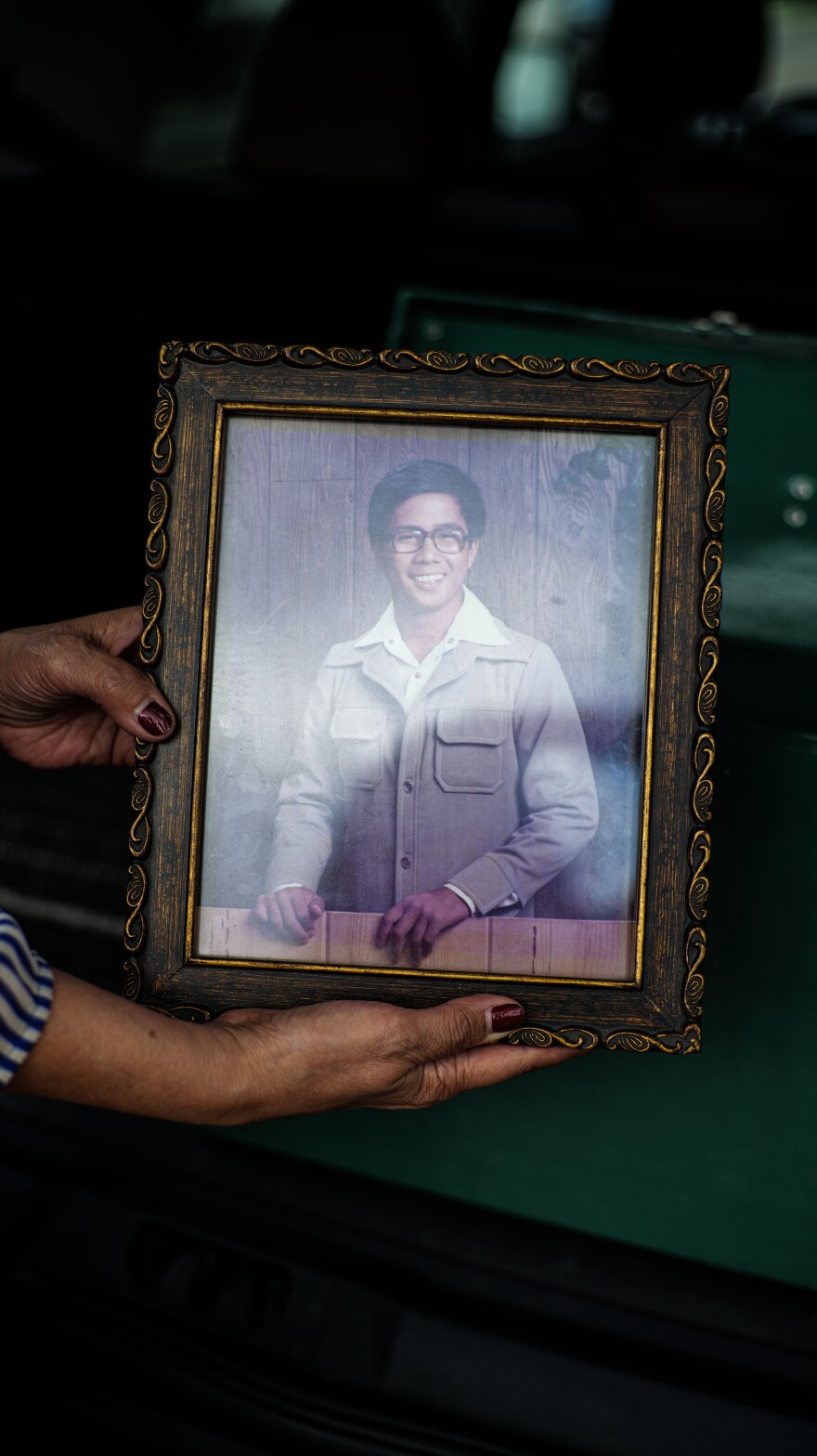
Memories of the day are still vivid.
“I was waiting for him at the airport to make sure that he could get on the plane and he came back out and said I got the last seat on the plane. So, that was the last time I saw him," said Pelowski.
On that day in 1978, Mike Bagnas was a high school sophomore.
“I was on a break between classes at St. Augustine High School, four blocks down the road,” he said.
Forty five years later and it’s still difficult to get the words out about what he saw when he looked up.
“I saw the fireball and you could see the glow of the fire into the windows… You could feel the people screaming.
It was horrible," Bagnas said through tears.
Seconds later, Bagnas said, he felt a boom … a wave emanating out from the point of impact.
Then, fear of another horror overtook him. His family home was at 33rd and Dwight Streets, about a block from the crash site.
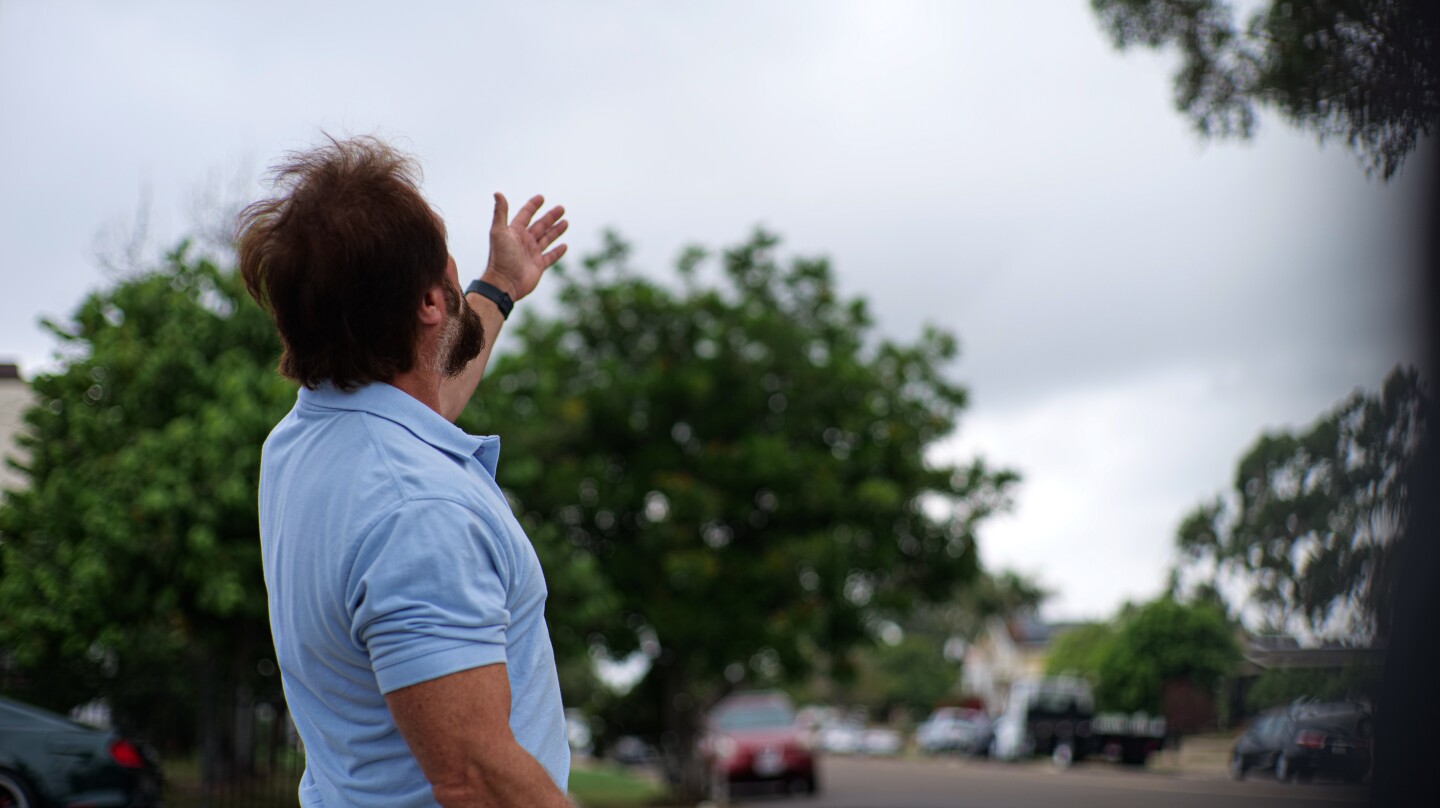
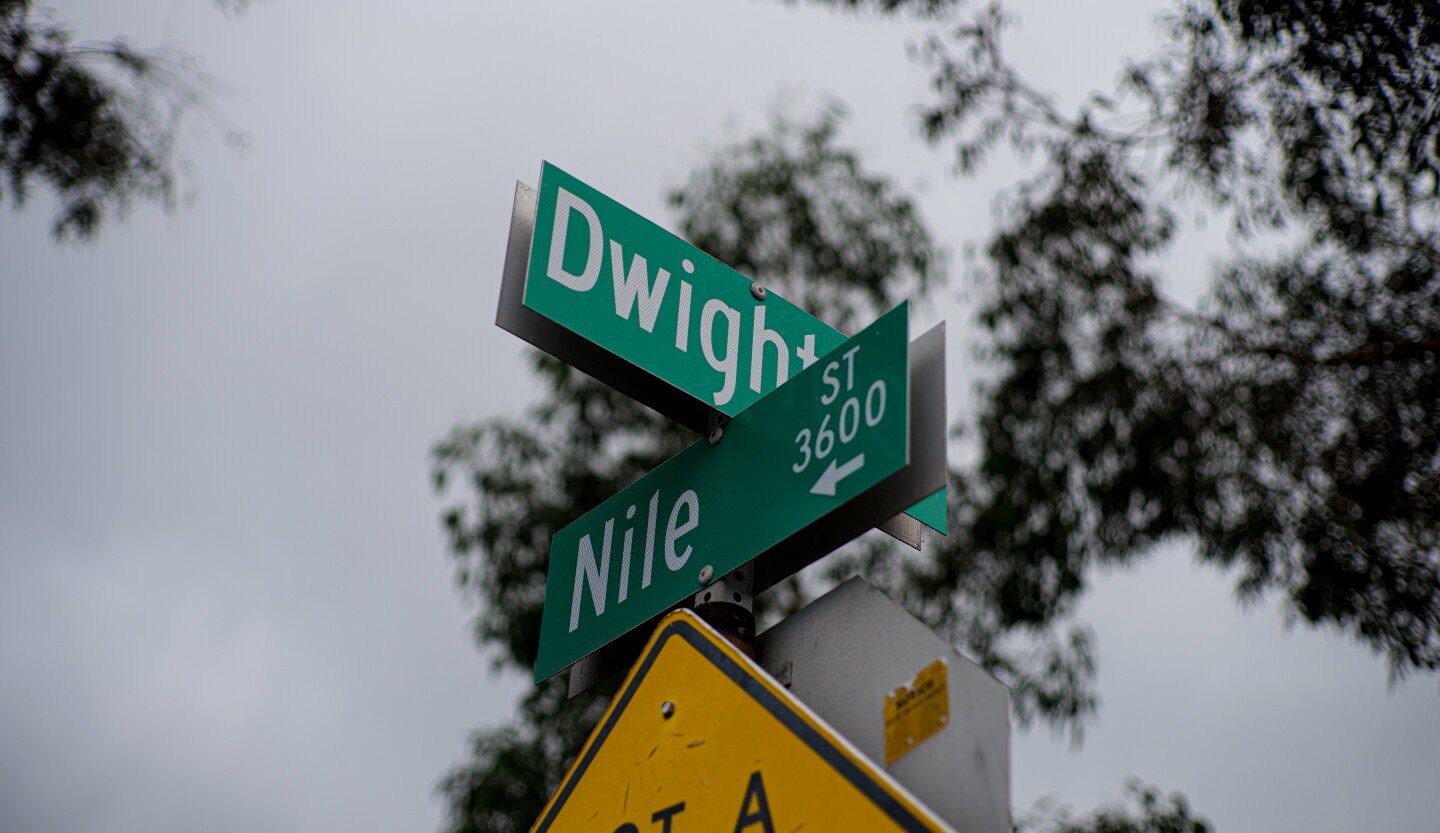
At first, Bagnas said he didn’t want to go home, afraid of what he would find. He first went to a friend’s house, and there he saw something that wiped away his worst fears.
“She had Channel 10 on and Jack White was reporting from the neighbor’s house across the street, and that’s when I knew, 'oh thank God,'" he said.
Bagnas knew if that neighbor’s house was standing, then his was too.
Meantime, Myra Pelowski made her way down from Sacramento to San Diego.

The coroner was never able to identify her brother’s remains, but she has something else that she keeps in a green case with her brother’s high school graduation picture. It’s his wallet, found at the crash site, not damaged at all.
“It was intact with his driver’s license and his pictures, and even a dollar in his wallet," she said as she opened his wallet.
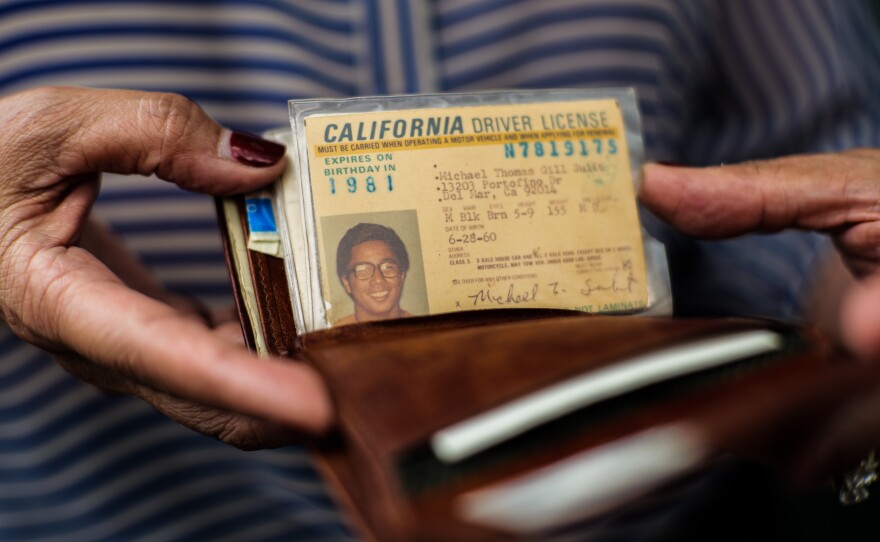
Ten years ago, Pelowski, Bagnas and several others formed a committee to finally place a proper memorial to those who lost their lives. Not that there aren’t memorials now.
The closest one is found outside the North Park Library Branch. It is under a tree, dedicated to the lives of those lost. It’s a rather small plaque, which doesn’t have one name on it of anyone who perished that day.
There’s another, larger memorial inside the Air and Space Museum. It's part of their PSA exhibit about the history of San Diego’s home-grown airline.
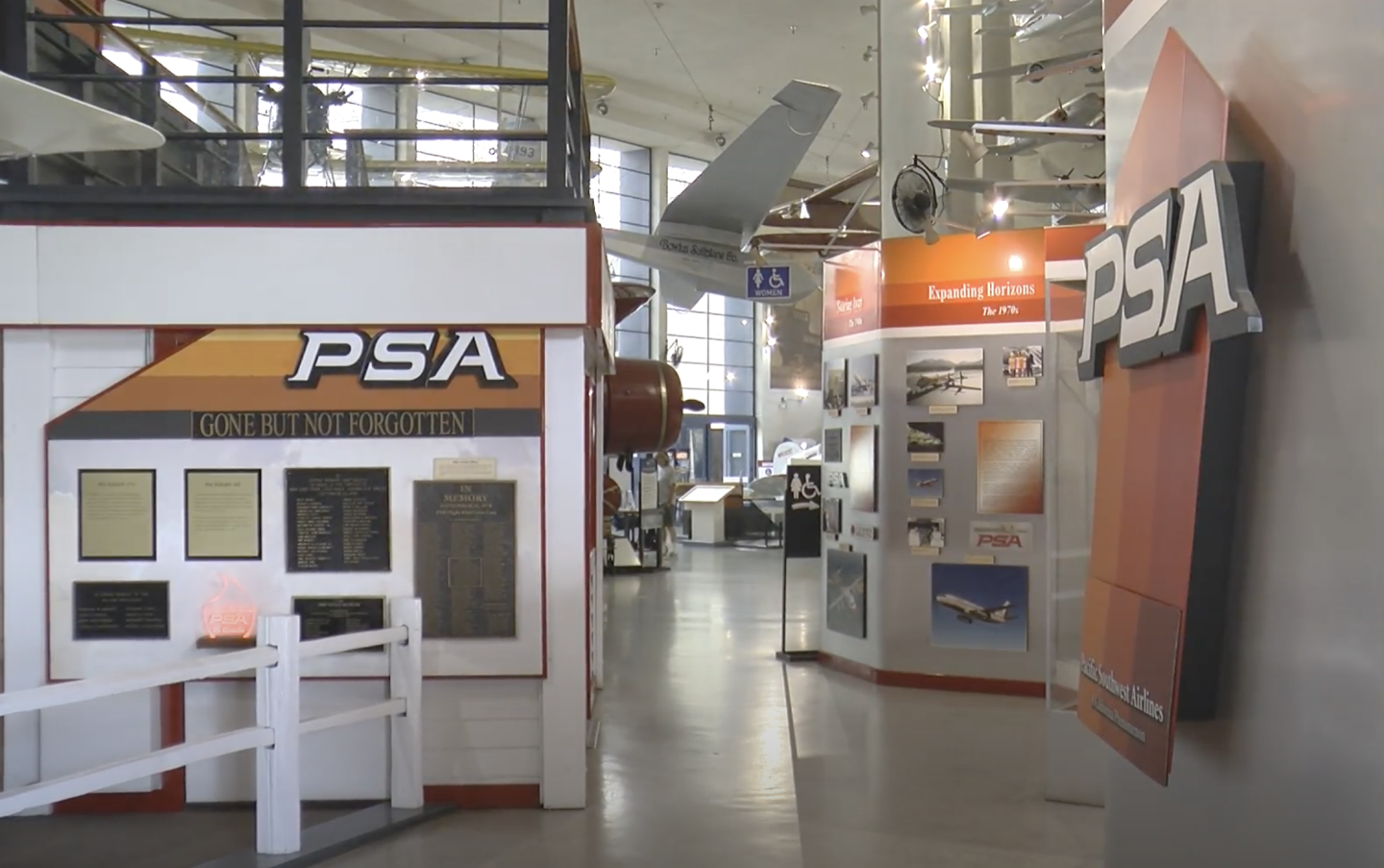

On its own wall, the memorial is headlined with the words "Gone but not forgotten."
It's a series of plaques, the largest one detailing all the lives lost on both airplanes and on the ground, and another dedicated to the memory of the 37 employees PSA lost on that day. But the plaques are in a museum — not in North Park, close to where it happened.
Myra Pelowski, Michael Bagnas and everyone else who’s worked for a proper memorial for years — are tired of waiting.
“None of us have a place to grieve. There’s no cemetery, there’s no headstone where I can say, this is where I can pay my respects," said Pelowski.
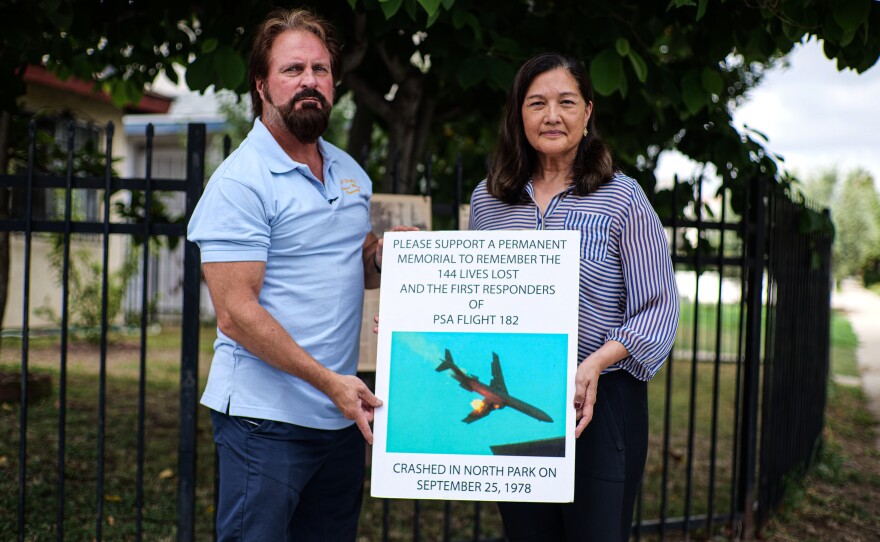
“Why isn’t there one here? Why can’t the politicians do that? Do I have to do it? They should do it," Bagnas said.
On Tuesday, answers from a San Diego City Council member.





